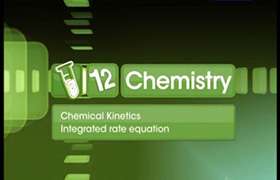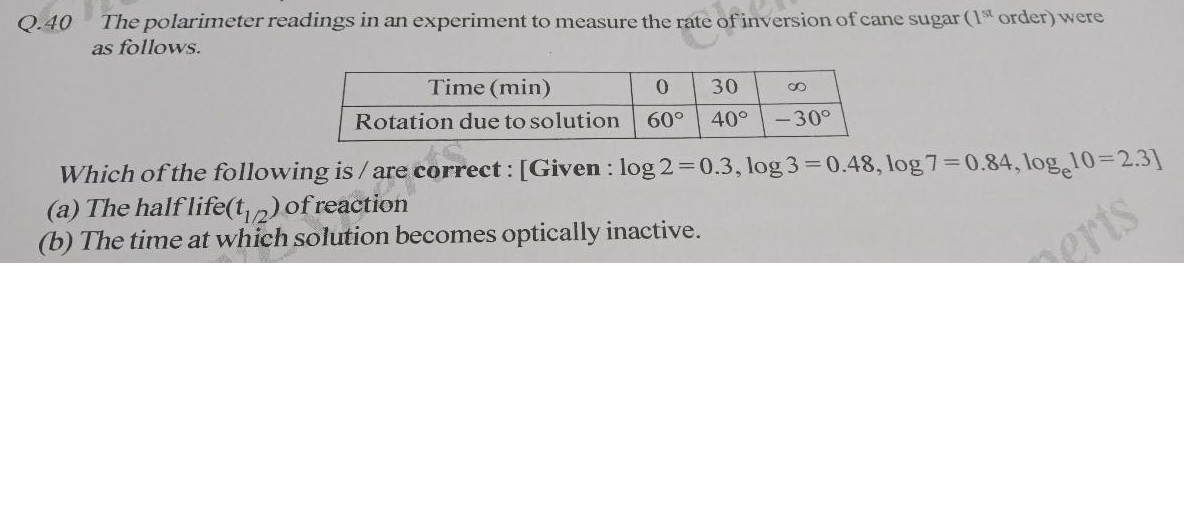CBSE Class 12-science Answered
An optically active compound 'A' upon acid catalysed hydrolysis yield two optically active compounds 'B' and 'C' by pseudo first order kinetics. The observed rotation of the mixture after 20 minutes was 5 degrees and after completion of reaction was -20 degrees. If optical rotation per mole of A, B and C are 60, 40 and -80 degrees. Calculate half life of the reaction.
Asked by rohit | 22 Jul, 2015, 02:28: AM
Answered by Arvind Diwale | 22 Jul, 2015, 10:06: AM
Concept Videos
CBSE 12-science - Chemistry
Asked by amitkumar.cis | 14 Jan, 2021, 12:40: PM
CBSE 12-science - Chemistry
Asked by Topperlearning User | 04 Jun, 2014, 01:23: PM
CBSE 12-science - Chemistry
Asked by Topperlearning User | 28 Mar, 2014, 10:16: AM
CBSE 12-science - Chemistry
Asked by Topperlearning User | 04 Jun, 2014, 01:23: PM
CBSE 12-science - Chemistry
Asked by Topperlearning User | 04 Jun, 2014, 01:23: PM
CBSE 12-science - Chemistry
Asked by Topperlearning User | 22 Jun, 2016, 09:20: AM
CBSE 12-science - Chemistry
Asked by Topperlearning User | 04 Jun, 2014, 01:23: PM
CBSE 12-science - Chemistry
Asked by Topperlearning User | 04 Jun, 2014, 01:23: PM
CBSE 12-science - Chemistry
Asked by Topperlearning User | 22 Jun, 2016, 09:17: AM
CBSE 12-science - Chemistry
Asked by Topperlearning User | 22 Jun, 2016, 09:18: AM





